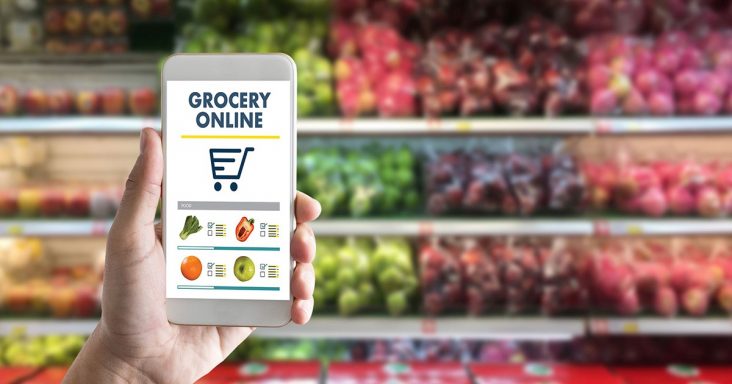Online grocery sales fall in April as more shoppers go into stores
by May 19, 2021 4:21 pm 938 views

Consumers opted to do more grocery shopping inside stores in April as COVID-19 infection rates declined. The April survey from Brick Meets Click/Mercatus indicates online grocery sales totaled $8.4 billion last month, falling 10% from March but more than four times higher than pre-pandemic levels.
Mercatus said the sales metric has been up and down in recent months but April’s online grocery sales were up 16% from the same month last year as the pandemic was just getting underway.
“Online shopping has remained an attractive way to buy groceries for a sizable segment of the U.S.,” David Bishop, partner at Brick Meets Click, said recently. “Last year, retailers were in a race to meet the dramatic surge in demand. This year, it’s about executing a sound and sustainable strategy, with the imperative squarely on improving integration and implementation.”
April online grocery sales included $6.6 billion in delivery and pickup and $1.8 billion in ship-to-home, versus $7.1 billion in delivery/pickup and $2.2 billion in ship-to-home for March. A year ago, online grocery sales in April were $5.3 billion. Smaller average ticket size helped to explain the April decline. Contrary to the larger tickets reported by Walmart and Target this week, the Mercatus survey from April 26-28 found the average order was 1% lower for store pickup and 7% lower for those shipped to homes. Consistent with commentary from Walmart and Target, their online customers’ baskets had fewer consumables and more general merchandise in the past month or so.
Mercatus said the online grocery user base shrank 12% to 67.8 million U.S. households in April but that downsizing was offset by more engagement from the active users. The monthly active users made an average of 2.73 online orders in April, edging up from 2.68 orders a year earlier. Share of orders received via the ship-to-home segment dropped almost 9% year over year, with pickup and delivery order share rising 6% and 3%, respectively.
The survey also found more shoppers relied on two or more methods — pickup, delivery or ship to home — to receive online grocery orders in April. More than 35% of monthly active users received orders via two or three methods in April 2021, up almost 3% on a year-over-year basis and 20% more than pre-pandemic August 2019 levels, the Brick Meets Click/Mercatus study found.
“As the country opens, we’re consistently seeing double the number of active online shoppers compared to pre-COVID,” said Sylvain Perrier, CEO of Toronto-based grocery e-commerce provider Mercatus. “At the same time, we know there’s increasing frustration with poor execution as evidenced by the widening repeat purchase gap between first- and fourth-time online customers. My message to grocery retail executives is blunt. There are no shortcuts. If you want to maximize the value of your digital investment, you also need a well-thought-out operations plan, one that can flex in response to shopper demand and help deliver a top-notch ordering and fulfillment experience.”
Mercatus also measured the likelihood that a monthly active user would make another order the following month via the same grocery retailer/service. This repeat intent metric jumped to 55% in April, up slightly for a year ago. Among the less satisfied users in April, 11% said they are still seeking an acceptable option, as they are extremely or very likely to use another service in the next month, the survey revealed.
Another recent poll by Survey Monkey found 86% of adults in the U.S. want to buy groceries themselves in stores. Meanwhile, e-commerce split the remaining respondents, with 7% saying they prefer pickup, while the other 7% favor delivery for their groceries. Beyond that main finding, the survey results dug deeper into shoppers’ preferences across channels and formats.
While other surveys have indicated that pickup will continue to dominate over delivery, the Survey Monkey results suggest the two e-commerce options can each target different demographics. People ages 18 to 34 showed the most enthusiasm for delivery, with 9% in that age group saying they prefer it, while the same percentage of people ages 65 and older said they favor pickup. And 10% of female respondents said they prefer delivery compared to 3% of male respondents.
Survey Monkey found in-store shopping was a still a strong preference of 90% of men and 82% of women across all age groups and income levels, according to its poll April 28-29.
